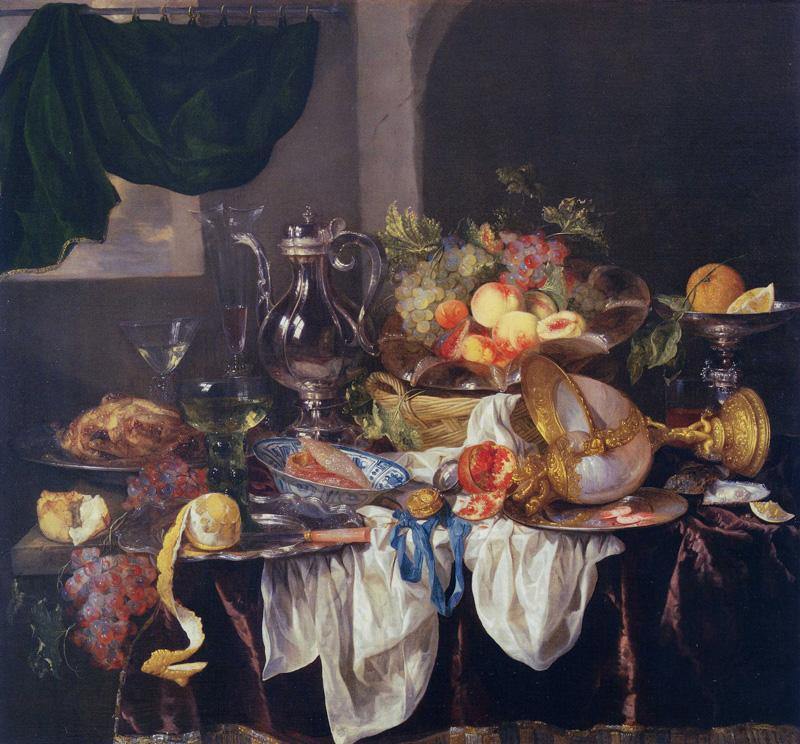Description
Abraham Van Beijeren's Banquet Still Life painting is a 17th-century masterpiece depicting a scene of banquets and celebrations in Dutch times. This work is a perfect example of the Baroque artistic style, characterized by its drama, richness and complexity.
The composition of the painting is impressive, with a wealth of details and elements that combine to create a vibrant and life-filled scene. The arrangement of objects and lighting are particularly notable, as they create a sense of depth and movement in the painting.
Color is also a prominent aspect of the work, with a rich and varied palette including warm and cool tones, used to create a sense of contrast and balance in the painting.
The history of the painting is fascinating, as it is believed to have been created in the 1660s, during a period of great prosperity in the Netherlands. The work was commissioned by a wealthy Dutch merchant, who wanted a painting that would reflect his wealth and social status.
Although the painting is widely known and appreciated, there are some lesser-known aspects that make it even more interesting. For example, it is believed that Van Beijeren used real objects in the painting, giving it an even more realistic and authentic look.
In short, Abraham Van Beijeren's Banquet Still Life painting is a Dutch Baroque masterpiece that combines stunning composition, vibrant color, and a fascinating history to create a work of art that remains relevant and exciting today.

